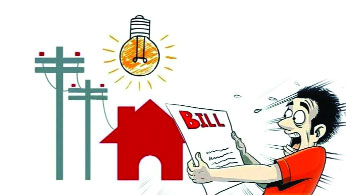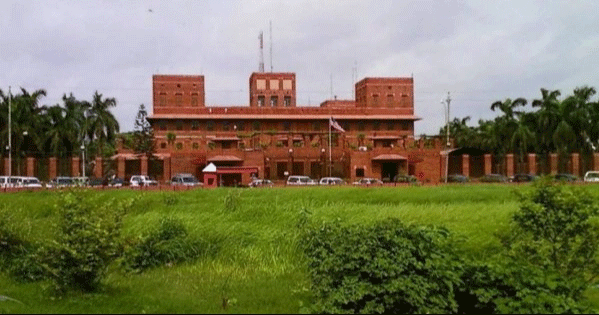Why energy prices rising
Aaqib Md Shatil: With the Bangladesh government raising the electricity tariff for a third time in two months, and Nasrul Hamid, the country’s energy minister, making it clear to the media that the government will be “adjusting” the price on a regular basis until the global crisis recedes, it is justified to ponder what has gone wrong in Bangladesh’s energy sector.
Since mid-2022, when Bangladesh started experiencing frequent power cuts and the crisis in the energy sector became visible, a new energy vocabulary has become common in the country’s media including in particular the terms “capacity charge”, and “rental power plants”.
What we are being told is that Bangladesh is paying a huge amount of capacity charge to rental power plants, and this is creating significant budgetary pressure which has meant an increase in power cuts as there is not enough foreign exchange to pay for the cost of the fuel. So, what is going on?
Speedy but shady power deals
Today’s crisis has roots in the early 2000s. Between 2001 and 2006, when Bangladesh started having stable growth and the economy grew by a quarter, the failure of the then government to increase the power generation capacity resulted in frequent power outages. The government’s inaction at the time certainly contributed to the significant unpopularity of Khaleda Zia’s second government as it came to an end. Consequently, increasing the capacity of power generation became a key policy agenda for the governments that took charge after 2006. In 2008, ahead of the general election, the Awami League presented a vibrant election manifesto where they pledged to “take all possible actions” to enhance power generation capacity and to take efforts for “regional energy security through mutual cooperation.”
Bangladesh’s energy sector had been a near public sector monopoly where everything from setting up power plants to distributing electricity, was managed by state-owned corporations, with even in the early 2000s only a meagre proportion of electricity coming from private power plants.
One of the key policies of Awami League, after winning the 2008 elections, was to encourage the private sector to invest in power generation. From 2009 to 2013, 51 power plants came into operation and 37 of them were privately owned (65%).
A recent study has found a trend of “collusive contracting” in the energy sector with a higher price for electricity production. Most of the deals made with these new power plants were protected by Quick Enhancement of Electricity and Energy Supply (Special Provisions) Act of 2010 which indemnified the companies from any future legal action against them.
Understanding capacity charge
Producing electricity is a complex process involving huge investments and comes with a number of risk factors. Perhaps the biggest risk to the power producer who has obtained a license to build a power plant involves the government deciding not to purchase power from the plant after the company has invested significant sums of money in the construction of the plant and employment of a work-force.
To mitigate these risks, independent power producers require some sort of guarantee from the government – and this is where capacity charges come in. Capacity charges are the amount paid to electricity providers to ensure that a sufficient supply of energy is available during peak hour of usage on the power grid. It is paid to make sure that the amount of electricity that might be required by consumers is always available on the grid even though it might not be required.
As the government wanted to encourage private investment in Bangladesh’s power sector, they did so by offering very high levels of capacity charges to independent power producers – far higher than generally given. This worked as a tonic. More than a hundred power plants, out of a total of 150 that are connected to national grid, are privately owned according to the annual report of Bangladesh’s power regulator. Today, Bangladesh has an installed capacity of 26,700 MW.
However, this success has come at a financial cost. Bangladesh’s allocated annual development budget for the energy sector stands at Tk 27,711.90 crores (around $2.5 billion), ten times the level in 2009 of Tk 2,677 crores. The taxpayers have to pay for this cost through increased taxes as well as electricity bills.
What makes us bleed?
Including the provision in deals of very high-capacity charges, is however not the only problem. One also needs to look at the overly ambitious targets of the government.
In the 2008 election manifesto, Awami League claimed that the demand for electricity will increase to 20,000 megawatts by 2021 and the party will do everything to produce that level of electricity. This view was also reflected in Bangladesh’s sustainable development strategy, which was adopted in May 2013. The strategy paper read, “The objective of the power sector is to reach power generation capacity to 24,000 MW to meet projected 20,000 MW of electricity demand by 2021”.
However, this estimate was based on the assumption that in a typical developing economy, a 1% increase in GDP would lead to a 1.5% increase in demand for electricity, so that an average 6% GDP growth each year would require 9% electricity demand growth. Accordingly, the government’s target of achieving 8% GDP growth by 2015 and 10% by 2021 would require 12% and 15% growth in the supply of electricity. Bangladesh’s Power System Master Plan of 2010 made similar projections
The expected growth in GDP, however, did not materialise at all. Bangladesh’s GDP growth rate was 6.6% in 2015 and 6.9% in 2021. The average GDP growth rates in last three Awami League terms have been 5.92%, 6.72% and 6.08% respectively. At the same time, investments from the private sector did not rise significantly. The gross fixed capital formation of the private sector (% of GDP) was 23.7% in 2021, while in the past, it rose from 17.86% in 2001 to 21.08% in 2007. As a result, the electricity demand did not rise as expected.
Despite these developments, the government did not revise the target for electricity generation and Bangladesh’s power regulators, based on the assumptions made in 2008, went all out to achieve the benchmark of 24,000 MW production capacity by 2021. It was reflected in the annual reports from 2012 to 2019.
In 2022, although the country had a installed capacity of 26,700 MW, the maximum daily level of electricity generated is 14,782 MW. The average generation hovered around 13,000 MW across the year. Consequently, Bangladesh is facing the problem of over-capacity, which is almost double compared to the average electricity demand. And since almost half of the power plants are lying idle, the government is paying a large sum of money in capacity charges to these power plant companies.
Stepping on the same rake?
Bangladesh is not learning lessons from this. The last annual report of BPDB has set the target to achieve a generation capacity of 40,000 MW by 2030 and 60,000 MW by 2041. The highly ambitious targets are based on the assumptions of high economic growth while trends of the economy suggest that the country is struggling to achieve the required growth to have anywhere near that demand for electricity.
It is high time for the policymakers to renegotiate the amounts of “capacity charges” it pays companies, and revise their power generation strategy based on the reality of economic growth and demand.
President Joe Biden tests positive for COVID-19 while campaigning in Las Vegas, has ‘mild symptoms’
International Desk: President Joe Biden tested positive for COVID-19 while traveling Wedne…








